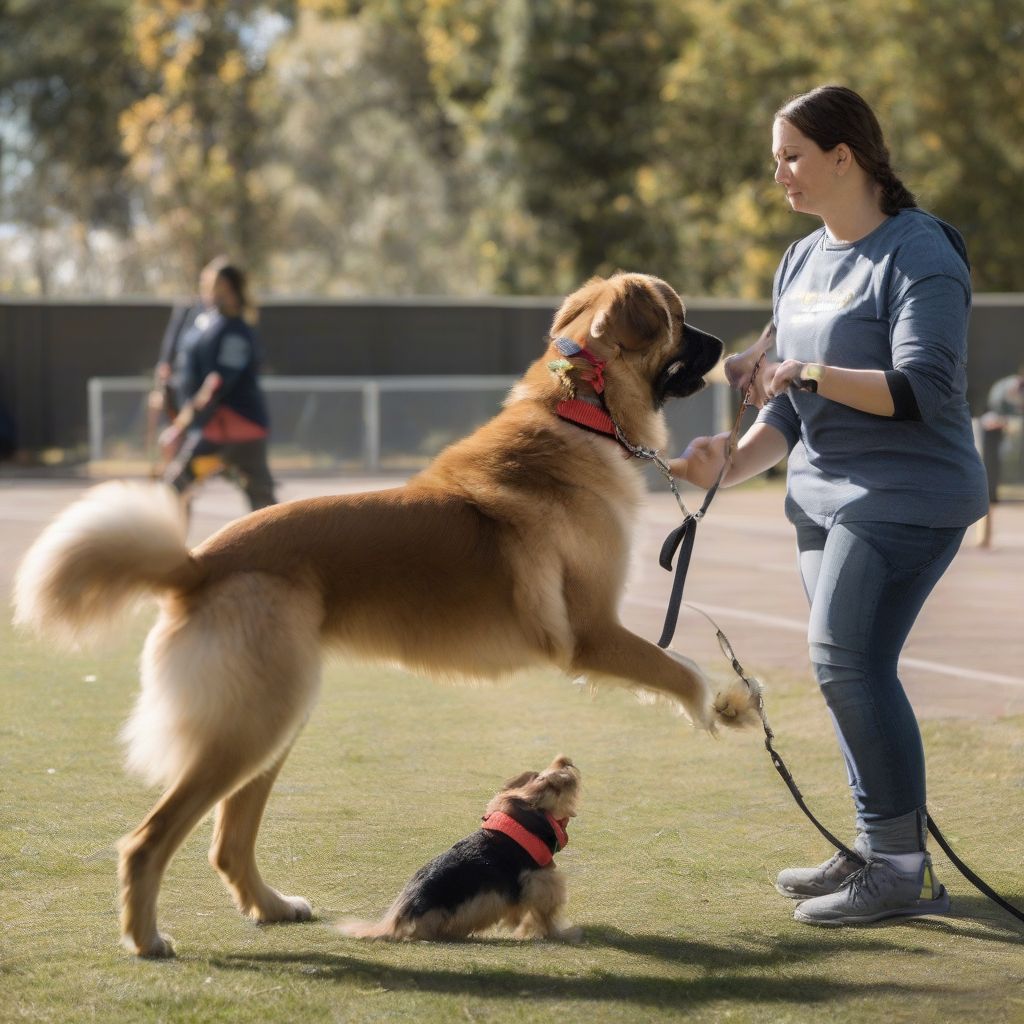Have you ever been startled by your usually sweet dog suddenly lunging and barking at a passing stranger? Or perhaps your cat transforms into a hissing, spitting furball at the mere sight of the mail carrier? This behavior, often labeled as aggression or reactivity, can be frustrating and concerning for pet owners. But understanding the underlying causes and implementing the right management strategies can make a world of difference. This comprehensive guide will delve into the nuances of aggression and reactivity in pets, offering practical advice and effective techniques to help you navigate these challenging behaviors and foster a harmonious relationship with your furry friend.
Understanding the Difference: Aggression vs. Reactivity
While often used interchangeably, aggression and reactivity are distinct behaviors. Aggression is a broader term encompassing any behavior intended to harm or threaten another individual. Reactivity, on the other hand, is a more specific type of aggression, often triggered by fear, anxiety, or frustration. A reactive dog might bark excessively, lunge, or growl at perceived threats, while a truly aggressive dog might bite without warning. Recognizing the difference is crucial for implementing the right management approach.
Identifying Triggers and Patterns
The first step in managing aggression or reactivity is to identify the specific triggers that elicit these behaviors. Is it other dogs, strangers, loud noises, or specific objects? Keep a journal noting the date, time, location, trigger, and your pet’s response. This will help you pinpoint patterns and anticipate potential problems. “Understanding the ‘why’ behind your pet’s behavior is like unlocking a secret code to their inner world,” says renowned animal behaviorist, Dr. Emily Parker, author of “Decoding Canine Behavior.” This understanding paves the way for tailored interventions.
Management Strategies: A Multifaceted Approach
Managing aggression and reactivity requires a multifaceted approach encompassing environmental management, behavior modification, and in some cases, medication.
Environmental Management: Creating a Safe Space
Creating a safe and predictable environment for your pet can significantly reduce their anxiety and reactivity. This might involve:
- Managing Exposure to Triggers: Avoid known triggers whenever possible. If your dog reacts to other dogs, choose walking routes that minimize encounters. If loud noises are a problem, create a quiet den where your pet can retreat.
- Predictable Routines: Establish consistent daily routines for feeding, exercise, and playtime. Predictability can reduce anxiety and promote a sense of security.
- Enrichment and Exercise: Provide plenty of mental and physical stimulation to help your pet burn off excess energy and reduce stress. Puzzle toys, interactive games, and regular walks can make a big difference.
Behavior Modification: Rewarding Desired Behaviors
Behavior modification techniques, such as desensitization and counter-conditioning, can gradually change your pet’s emotional response to triggers. These techniques involve:
- Desensitization: Gradually exposing your pet to triggers at a low intensity, below the threshold that elicits a reaction. Over time, as your pet habituates to the trigger, you can slowly increase the intensity.
- Counter-Conditioning: Pairing the trigger with something positive, such as a high-value treat or toy. This creates a positive association with the trigger, replacing the fear or anxiety with a more pleasant emotional response.
Medication: Supporting Behavior Modification
In some cases, medication may be necessary to support behavior modification efforts, especially in cases of severe anxiety or aggression. Consult with your veterinarian to determine if medication is appropriate for your pet.
Seeking Professional Help: When to Call in the Experts
While many cases of mild reactivity can be managed with the strategies outlined above, it’s essential to seek professional help if your pet’s behavior is escalating or poses a safety risk. A certified professional dog trainer or a veterinary behaviorist can provide tailored guidance and develop a customized behavior modification plan. “Don’t hesitate to reach out for help,” advises Dr. Sarah Miller, a veterinary behaviorist with over 20 years of experience. “Early intervention is key to successful behavior modification.”
 Managing Pet Aggression
Managing Pet Aggression
- Zoom Room Dog Training (Author)
- English (Publication Language)
- Hodgson, Sarah (Author)
- English (Publication Language)
- Hardcover Book
- Volhard, Jack; Volhard, Wendy (Author)
- Millan, Cesar (Author)
- English (Publication Language)
- McCullough, Susan (Author)
- English (Publication Language)
- Marin, Vanessa Estrada (Author)
- English (Publication Language)
Conclusion
Managing aggression and reactivity in pets requires patience, consistency, and a deep understanding of your pet’s individual needs. By implementing a combination of environmental management, behavior modification, and professional guidance when necessary, you can help your pet overcome these challenges and live a happier, more balanced life. Remember that every pet is unique, and what works for one may not work for another. Be patient with the process, celebrate small victories, and don’t hesitate to seek support from qualified professionals. We encourage you to share your experiences and insights in the comments below. What strategies have you found helpful in managing your pet’s reactivity? Let’s create a supportive community where we can learn from each other and help our furry companions thrive.











